Ghost town of Pembroke: A walk in the Whittemore Town Forest
| Published: 10-29-2017 2:00 AM |
Thanks to the Merrimack and the Suncook rivers, Pembroke is blessed with multiple floodplains. But not, as it turns out, quite as many as early European settlers had hoped.
Settled by the English in the 1730s, the town was first laid out on a grid, with its main arteries – called “range roads” – running parallel to the Merrimack. First Range Road, closest to the river, is now an unused rail bed. Second Range Road survives as Pembroke Street and Route 3.
The town’s earliest parcels on the grid were divvied up by lottery, and those close to the Merrimack found their soil rich with nutrients and easy to cultivate. But those who built their homesteads in the area that includes Pembroke’s modern-day town forest, past Fourth Range Road, found their surroundings to be rocky, hilly and uncooperative with plows.
After a brief period of settlement, the area was abandoned, its denuded landscape mostly reclaimed by pines and hardwoods. Fifth Range Road was eventually closed to traffic by the town.
But the cellar holes, stone walls and trails that remain hold clues to the past. And on a sunny autumn Sunday afternoon, the historical society and conservation commission’s Ayn Whytemare took a group of local residents to explore what she dubs the “ghost town” of Pembroke hidden in the Whittemore Town Forest.
Standing at the intersection of Fifth Range and Kimball roads, Whytemare used a hiking stick to sketch out the town in the dirt.
“What they did initially is they broke up the town just like a grid into about 70 sections. And they assigned all of them through a lottery, except for two,” she said.
Whytemare talks about the floodplains, and the hardscrabble life those just outside their borders managed to barely eke by. A moment of reprieve came when the sheep business came to town, she said.
Article continues after...
Yesterday's Most Read Articles
 “It’s beautiful” – Eight people experiencing homelessness to move into Pleasant Street apartments
“It’s beautiful” – Eight people experiencing homelessness to move into Pleasant Street apartments
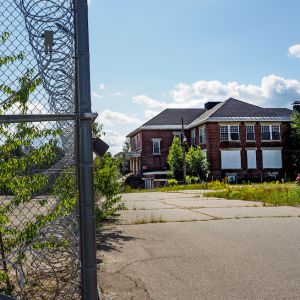 No deal. Laconia buyer misses deadline, state is out $21.5 million.
No deal. Laconia buyer misses deadline, state is out $21.5 million.
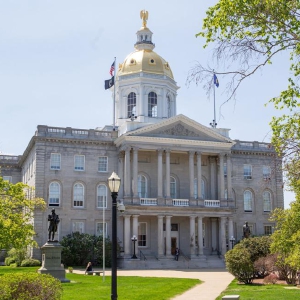 N.H. Educators voice overwhelming concerns over State Board of Education’s proposals on minimum standards for public schools
N.H. Educators voice overwhelming concerns over State Board of Education’s proposals on minimum standards for public schools
 Matt Fisk will serve as next principal of Bow High School
Matt Fisk will serve as next principal of Bow High School
 High schools: Coe-Brown softball wins 5th straight, Concord’s McDonald pitches first varsity win, Tide’s Doherty scores 100th career point
High schools: Coe-Brown softball wins 5th straight, Concord’s McDonald pitches first varsity win, Tide’s Doherty scores 100th career point
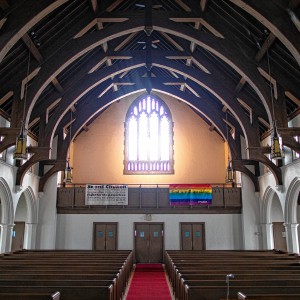 Construction of housing project in former Church to begin with parking dispute in the rearview
Construction of housing project in former Church to begin with parking dispute in the rearview
“You could graze animals. And you could take the sheep’s pelt and wrap it up, put it on a boat to England and make plenty of money that way,” she said. But that brief prosperity ended when the sheep business bottomed out in the 1850s, she said, and many decamped for the Ohio River Valley.
The legacy of that time is found in the stone walls that still line the Class VI roads that crisscross the forest – and the handful of cellar holes that dot the landscape.
After a roughly five minute walk down Fifth Range Road, Whytemare ducks into the forest. A few hundred yards in, a cellar hole – about 5 feet deep – juts out from underneath the bed of muddy orange leaves that carpets the forest floor.
The cellar hole belonged to the Kimball homestead, Whytemare said, and she points out a collection of bricks where a chimney likely once stood.
Sometimes, people ask if they can bring metal detectors to the holes to look for forgotten treasures. She discourages it strongly, she said: “Once you take something out of its context, it is forever gone.”
If Whytemare is protective of the town’s history, it’s partly because it’s hers too. Like many New England residents, her roots go far back in the region.
Whytemare, as it turns out, is actually a Whittemore. (In a moment of youthful rebellion, she changed the spelling to match a 13th-century rendering of her family name.)
The town’s first minister, Aaron Whittemore, is Whytemare’s ancestor. (“Lest you think we’re getting on our high horse about it – he was asked to leave after 20 years,” she jokes at one point.) And Laurence Whittemore, her grandfather, snapped up the land that now encompasses the Whittemore Town Forest during the Depression.
At about 100 acres, the Whittemore forest is Pembroke’s largest piece of conservation land. But while much of Pembroke is forested, only about 3 percent of it is actually conservation land, Whytemare said – much less than some of its neighbors. For a steward of the past – and ecology professor at NHTI – that’s less than ideal.
“It’s a resource that once it’s been developed once, it’s gone. It’s gone. I know it was abandoned once. I don’t believe it would be abandoned a second time,” she said.
(Lola Duffort can be reached at 369-3321 or lduffort@cmonitor.com.)


 Community Players of Concord present newest adaptation of Pride and Prejudice
Community Players of Concord present newest adaptation of Pride and Prejudice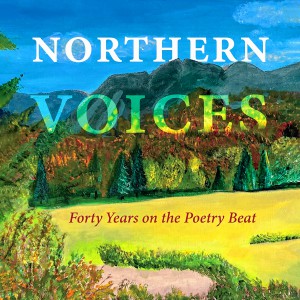 Concord Monitor editor Mike Pride’s final book explores the lives, works of Northern New England poets
Concord Monitor editor Mike Pride’s final book explores the lives, works of Northern New England poets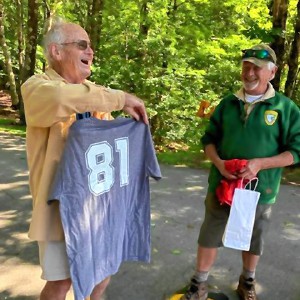 Active Aging: John Burke of Peterborough celebrated his 81st birthday with 81 hikes up Pack Monadnock
Active Aging: John Burke of Peterborough celebrated his 81st birthday with 81 hikes up Pack Monadnock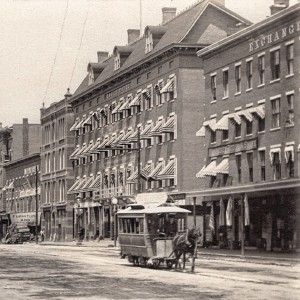 Vintage Views: From darkness to light
Vintage Views: From darkness to light
